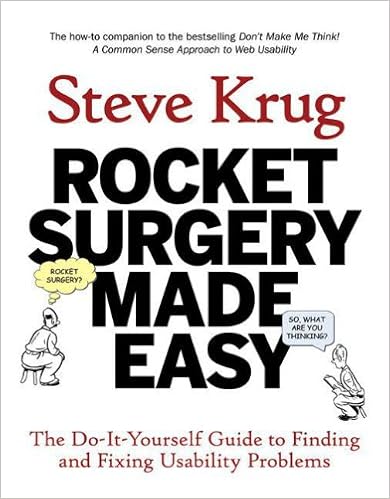I read Steve Krug’s Rocket Surgery Made Easy way back in 2010.
Scribbled on page 2:
This book is a good guide to conducting UX testing. Recommended to finish within an hour, then practically follows what it said.
I felt this is one rare book that gave very valuable step-by-step guide, which save readers from making mistakes.
And so here I recap on the lessons learnt.
Lessons Learnt
Start by watching
a demo test session
The “master” plan:
A morning a month,
that’s all we ask
Do-it-yourself usability tests
are NOT quantitative/statistically valid
but are qualitative and so “obvious”
that there are no need for proof
Recruit loosely and grade on a curve
Means find your target audience
but don’t get hung up about it
List the most important tasks
that people need to do with your product
Select a few for the session
Convert tasks
into scenario
with context - “You are…”, “You need to …”
without giving exact clues/steps
Print each scenario on 1 sheet of paper
without numbering the sequence
to give to participant
Preparation Checklist
Read the script to participant
explaining how the test work
Pre-test questions (2min)
to understand them
and get them comfortable talking
and let them know you’re actually listening
Home Page Tour (3min)
figure out what this product is about
without clicking away
The Tasks (35min)
Read out and
give out the printed scenario/tasks
Encourage: to think out loud
as you go along
“What are you thinking/looking at/doing now?”
“Is that what you expected to happen?”
“What would you do if I wasn’t here?”
“How do you think it would work?”
Neutral acknowledgement like “uh huh”, “OK”
Probing (5min)
Ask deeper questions and clarifications
on their actions earlier
Make it a
spectator sport
Because seeing is believing
When fixing problems
try to do the least you can
Tweak, don’t redesign
Take something away
Focus ruthlessly
on only the most serious problems
